Tourist Attraction Of Jaipur

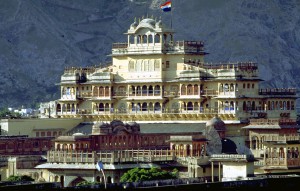
The City Palace is a historic landmark. The carved arches are supported by grey-white marble columns studded with floral motifs in gold and coloured stones. Two elephants carved in marble guard the entrance, where retainers whose families have served generations of rulers are at hand to serve as guides.The palace interior houses a Museum containing select collection of various types of Rajasthani dresses, a fascinating armoury of Mughal and Rajput weapons; swords of all shapes and sizes, with chased handles, some of them inlaid, enamelled, encrusted with jewels and encased in bold and magnificent scabbards.
It also has an art gallery with a fine collection of paintings, carpets, royal paraphernalia and rare astronomical works in Arabic, Persian, Latin and Sanskrit, acquired by Sawai Jai Singh-II for his study of planets and their movements.
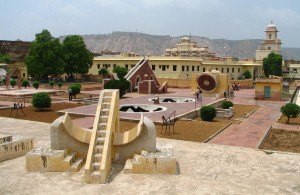
Jantar mantar is one of Jai Singh's five remarkable observatories. Constructed with stone and marble its complex instruments whose settings and shapes are precisely and scientifically designed represent the high points of Medieval Indian astronomy. The Ram Yantras used for gauging altitudes are unique in their isolation. This is the largest of the five observatories founded by Sawai Jai Singh-II in various parts of the country. It has been listed in UNESCO world heritage sites .
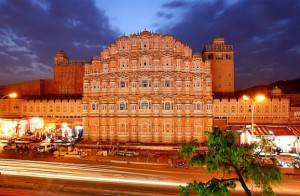
Built by the poet king Sawai Pratap Singh, the Hawa Mahal is the most strikingly designed monument in Jaipur. What is seen from the Sireh Deorhi Bazaar is the multiniched five storey high backside of the complex ( see it in photo gallery ). It was conceived to provide adequate vantage position behind delicate stone carved jali screens to the palace women for watching the royal processions passing through the bazaar below.

It is situated in the beautiful garden of Jaipur city, Ram Niwas Bagh. It was constructed by Maharaja Sawai Ram Singh in the year 1886 under the drought relief work of Rs 4 Lacs. The design of the building was done by Sir Swinton Jaicob. Presently the hall is used for museum purpose.
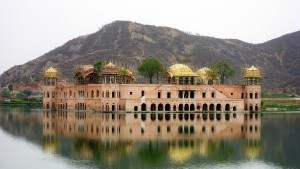
A tiny palace romantically located in the middle of a small lake, this was supposed to be a hunting lodge for the royal family. It can only be viewed from the banks of the lake.

For seven long centuries before Jaipur was built, Amer served as the capital for Kachhwaha rulers of the old state of Dhundhar.Amer Fort is the complex of palaces, halls, pavilions, gardens and temples, which were built by Raja Man Singh, Mirza Raja Jai Singh and Sawai Jai Singh over a period of about two centuries.The palace complex rising from the placid waters of the Mootha lake is approached through a steep path, now often traversed by tourists on elephant-back, to Singh palace and Jaleb Chowk. Two flights of stairs rise from one end to the chowk, one leading to the elegant temple of Shila Mata and other to the palace complex. The image of the Mother Goddess worshipped with reverence by thousands of devotees every day was brought from Jessore in East Bengal ( now in Bangladesh ) by raja Man Singh and installed here.

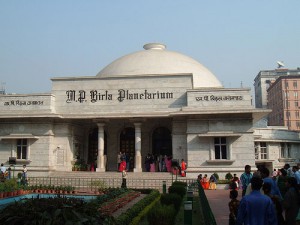
Equipped with modern computerized projection system, the planetarium offers unique audio-visual educational entertainment. A Science Museum is also a part of this one of the most modern planetarium in India.

Beyond the gardens amidst the low hills guarding the city lies the old pilgrim centre of Galtaji. Temples, pavilions and holy kunds ( natural springs and reservoirs ) do the serene green landscape. The small temple of the Sun God, built by Diwan Kriparam on the top of the highest peak, is visible from all parts of the city.
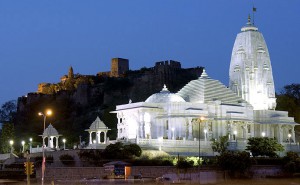
In the southern horizon is a privately owned hilltop fort of Moti Doongari shaped like a scotish castle. At the foot of the hill, Laxmi Narayan Temple, beautifully built in sparking white marble, is located.
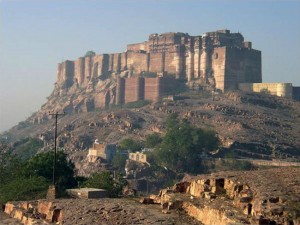
Nahargarh fort is the first of the three forts built by Maharaja Jai Sawai Singh of Jaipur. The Fort stands at the top of rugged point of the Aravalis and offers a spectacular view of the City. Keeping this fact in mind, the fort was made to serve as a means of supporting the security of Amer. The term "Nahargarh" refers to "the Abode of Tigers", so it is also known as the Tiger Fort. The Fort was constructed mainly in 1734, however further additions were made to it, by the succeeding rulers in the 19th century. According to a legend,
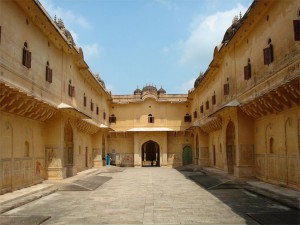
the Fort was named after a prince, whose spirit used to haunt the construction site. As a result, a tantrik was called and the ghost agreed to leave the fort only if, the fort was named after him. There are numerous buildings situated inside the Nahargarh Fort and amongst them, Madhavendra Bhawan appeals the most. It was built by Sawai Ram Singh II and has a series of interconnected rooms with colorful corridors and hallways. This Place was used as a picnic spot for the members of the Royal family.
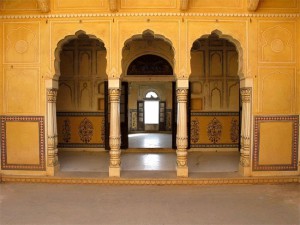
The prime Attraction of the Nahargarh Fort is the Madhavendra Bhavan which was the summer retreat of the royal family. The structure was built by Sawai Ram Singh II in 1880s and boasts of 12 completely alike suites for the use of queens. The suite of the king was constructed at a convenient place so that he could visit his queens without any hassles. The rooms are linked with each other by means of corridors and have beautiful frescoes inside. There are also toilets and kitchen hearths in this pleasure palace.
This pleasure palace is one of the most loved picnic spot today. Durg cafeteria is located just above the entrance and provides refreshment for the tourists. The Padao restaurant situated in the western part is open only in the evenings and sells drinks to its customers. The Nahargarh Fort in contrast to the other forts of Rajasthan is neither very massive nor very crowded. As such it offers a perfect retreat for all those who wish to spend some quiet moments with themselves. The tranquility offered by the fort draws many tourists from far and wide.
